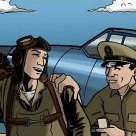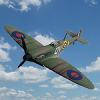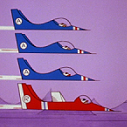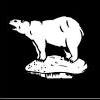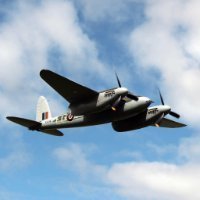-
Posts
2,379 -
Joined
-
Last visited
-
Days Won
2
Old Man last won the day on August 9 2017
Old Man had the most liked content!
Profile Information
-
Gender
Male
-
Location
U.S.A.
Recent Profile Visitors
Old Man's Achievements

Very Obsessed Member (5/9)
5k
Reputation
-

NiD-72 'Negrinho', Sao Paulo Public Forces, September, 1932
Old Man replied to Old Man's topic in South of the Rio Grande GB
Some real progress at last. As a conversion this is pretty straightforward. The metal wing was covered with corrugate panels The many tightly spaces ribs of the original cloth covered wing must be reduced. Every third rib remains, the two between each are shortened front and back, and toned down a good deal. The inexplicable 'rivets' on the Heller 622 kit have to be smoothed down, and the 'strips' of the metal covering indicated. This is partly done behind the cockpit. There's not much besides contriving radiators under the winglets for the conversion. The correction, however: that's something else again. The Heller nose is far too off to stand compare with the header photograph. The basic problem is that everything is squashed into a nose too short from winglet root to spinner, and even within this abbreviated space, much is too small, and too close together. The cylinder banks don't 'sprout' properly from the streamlined nose. I have gained nose-space by trimming back the winglet root 1mm, and adding a spacer of 1mm sheet at the very nose. This required setting the upper decking piece so it's a little higher than usual at the front. I carved away at the sides to get the cylinder banks more distinct, and provide a flat run for the full exhaust stub run. These are much more prominent in picture and 3-view than on the Heller kit. I beefed up the cylinder banks with 2mm half-round on top. Here's how the nose stands now: Next will be the rest of the nose detail, and the fuselage scribing. James -

Boeing P-12E - Panama Garrison Pursuits, Pt. 1
Old Man replied to Old Man's topic in South of the Rio Grande GB
Cabanes and lower wing dealt with: The cabanes of Matchbox biplanes join as a unit. I tested its fit against the Monogram upper wing. There was a good deal of spread to the open forward portion of the fuselage, most I expect due to my fettlings in the cockpit. The cabane unit worked as a spacer to narrow the gap to its proper width, Here's the forward decking on, and the lower wing: The wing joint looks quite nice from above: beneath was a different story: Rather than filler for gaps and leveling up the central tab to the ventral surface, I cut a plate of 10thou and capped the thing. I taped off most of the wing: it will be far easier to restore damage to the wing's orange-yellow over white primer. Getting the fuselage under color is next.... James -

Curtiss P-36 - Panama Garrison Pursuits Pt. 2
Old Man replied to Old Man's topic in South of the Rio Grande GB
Started with the foil: here's the wing: Foil is tricky to take pictures of. These are indoor sunlight, so there's no glare. Ailerons get silver paint, walkway gets black, wingtips are tricky and left till last, when bits of touching will be done. I've lately taken to doing this panel by panel, with the adhesive 'painted' onto a panel. The panel .lines mostly are separate pieces butted together. As long as you've got the piece's mating edge straight, excess elsewhere is readily trimmed off with a knife and straight-edge, guided by the lines penciled in over primer, with just the barest hint of a scribed line for guide of that. It's fairly quick, the brushed on adhesive sets to sticky quick, and CA accelerator works for cleaning the brush. Fuselage is next... James -

Curtiss SOC-3 Seamew
Old Man replied to Courageous's topic in The Fleet's In! US Naval air 1910 to present
That's beautiful work, Stuart! James -

Grumman F3F-2, Special Hobby 1/72
Old Man replied to Old Man's topic in The Fleet's In! US Naval air 1910 to present
I think most all of these went through that squadron towards the end of their service life. Where did you get the decals? I'd have rather done something besides black on silver, but the lingering rudder stripes on Marine machines appeal. James -

Grumman F3F-2, Special Hobby 1/72
Old Man replied to Old Man's topic in The Fleet's In! US Naval air 1910 to present
That is a relief, but this still needs to be a blitz-build now by my standards, I've still my South of the Rio GB trio to be done by the coming fifteenth. My eyes may have got a bit big for my fingers.... James -

Grumman F3F-2, Special Hobby 1/72
Old Man replied to Old Man's topic in The Fleet's In! US Naval air 1910 to present
Thank you! These were prone as PrintScale to wrap the paper and fold over corners. For the small ones, I lift them off the backing onto a wide, flat brush, with the adhesive side showing for placement. The other strip I cut to its components, so the 2 and MF and 10 became separate small ones. James -

Boeing P-12E - Panama Garrison Pursuits, Pt. 1
Old Man replied to Old Man's topic in South of the Rio Grande GB
Fuselage is closed. Instrument panel is scratch-built. Two pieces, one with holes, the other white backing. Paint black, scratch in the wells, put in some gloss. The headrest needed a lot of sanding to get it down to size. Here it is with the vertical surface on" I'll be doing this one, it's a simpler livery. James -

Grumman F3F-2, Special Hobby 1/72
Old Man replied to Old Man's topic in The Fleet's In! US Naval air 1910 to present
I'd hoped to have the wing on this weekend. The clock's running down, and I've got three more going in the Latin American GB. However, the decals staged an ambush. The first 2-MF-10 strip folded over on itself and could not be retrieved. I was able to use the rest, carefully, and could assemble replacement from another subject on the sheet, and '10' from among spares. Flash is brutal to the finish, but does light up the decorations: Here's the upper wing. James -

NiD-72 'Negrinho', Sao Paulo Public Forces, September, 1932
Old Man replied to Old Man's topic in South of the Rio Grande GB
Getting something up on the board here: Heller's interior is rudimentary, but its rudiments are accurate. I've put in some stringers on the sidewalls. This will be something of a blitz-build by my standards, along with its fellows here. But at least the finish is simple. Most of the work will be on the nose: Heller squashes things in there, the proportions of the exhausts and other fittings are just wrong. The profile, and length before the winglet's leading edge, is a bit off at the bottom, and a bit short too. I think it's fixable, and do have a spare kit. James -

Boeing P-12E - Panama Garrison Pursuits, Pt. 1
Old Man replied to Old Man's topic in South of the Rio Grande GB
When I got back to this, I decided what I'd done in the cockpit wouldn't do, and took it out. Here's the 'new look'... I took out the kit floor. New one, and rear bulkhead, fit for closing fuselage. So does the 'bar' extending at the cockpit front. It will bear the instrument panel, and machine-gun breeches, if I decide to put them in (I expect these often were flown without a war load --- lots more fun for the flier). The black bit is a front baffle plate, to go ahead of the heel slides. Next session I'll get to 'Negrinho'. James -

Grumman F3F-2, Special Hobby 1/72
Old Man replied to Old Man's topic in The Fleet's In! US Naval air 1910 to present
The sunny uplands have been reached. Here's the wee barrel fresh from the final spray... The smutz on the port wingtip is masking tape residue: I didn't want more on the wings when the fuselage got a last bit of 'here and there' spray. Got the section stripe on (black with white pinstripe). It must be wide enough to contain the 'MF' of the identity alpha-numeric. The kit decals provide pinstripes in parallel, but they're too close together. For the stripe, I masked and painted a band in white, then applied strips of black decal film so just a hair of white was left, then painted between the decal strips. To give some difference between metal and cloth surfaces, I gave the fuselage a coat of Future, then gave everything a pass with a polishing sponge. This dulls the Future, and slightly distresses the bare rattle-can silver spray. Here's the cowling ready for its black front. Wing fillets need to be black as well. Can't say there's nothing but blue skies ahead till I've got the struts sorted.... James -

Curtiss P-36 - Panama Garrison Pursuits Pt. 2
Old Man replied to Old Man's topic in South of the Rio Grande GB
Glad to be back. I was awful tired of the Condor well before I was through with it. But I can get quite bloody-minded about such things.... I'm looking forward to the Negrinho build particularly. James -

Curtiss P-36 - Panama Garrison Pursuits Pt. 2
Old Man replied to Old Man's topic in South of the Rio Grande GB
The YC-30/Condor affair has taken most all my modeling time for weeks, and now that it's settled I've taken up lapsed projects. This was the most advanced of my trio here; I'll be getting to the P-12 and Ni-D 72 next session on the bench. The assembled wing and closed fuselage are just test-fit here. I've done what scribing is necessary for a foil finish. Seat and stick will be added, it's easier to be sure they're centered that way. The locator lug at the bottom I ought to have dealt with before putting the motor in and front on. I could have, the motor was inserted after the fuselage closed, I just didn't check. I expect I can remove much of it, and matte black conceals a multitude of sins.... James -

Biplane, when 2 wings are better than 1
Old Man replied to JOCKNEY's topic in 2024 Bunfight Archives
Right up my alley, Sir! Count me in. James







